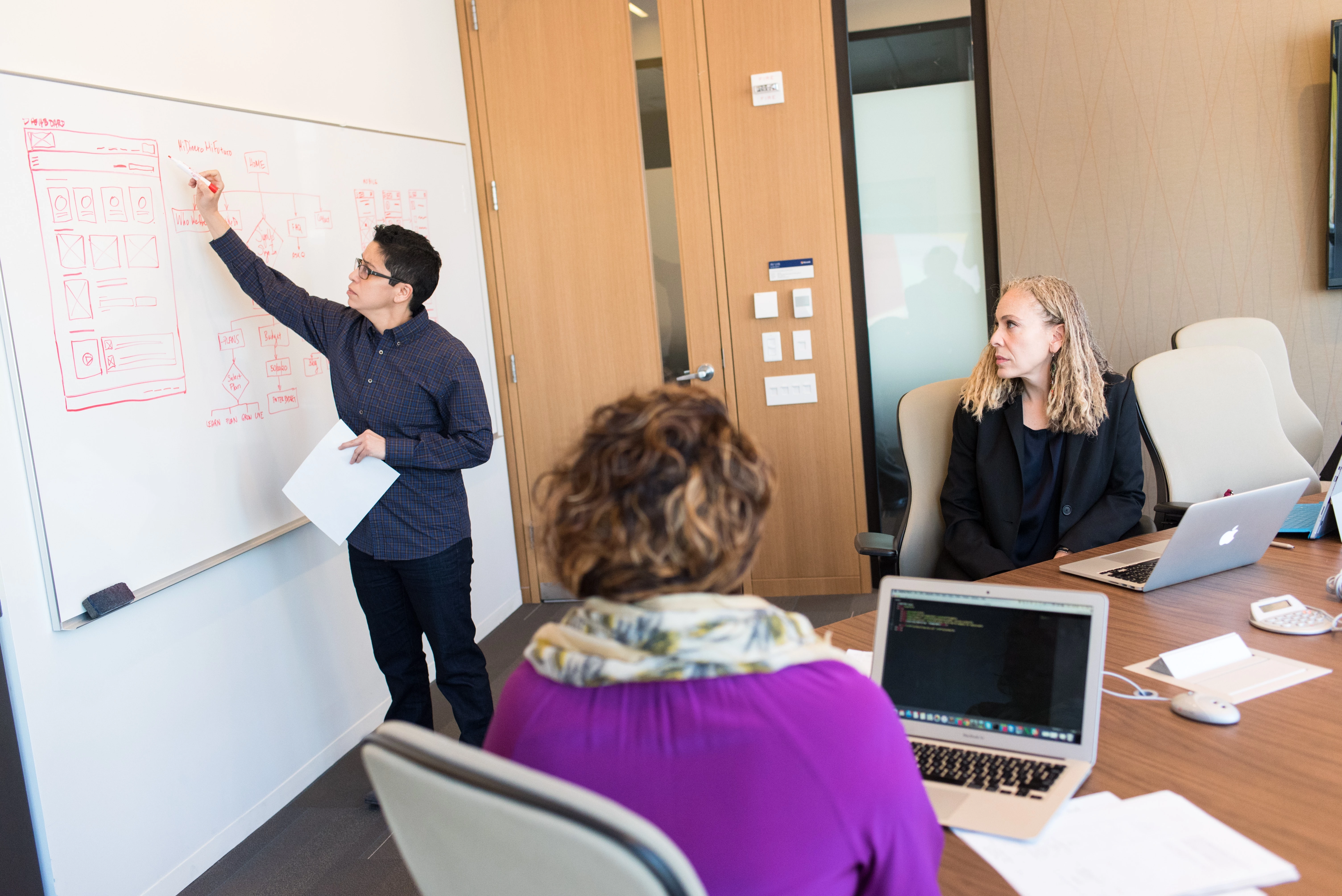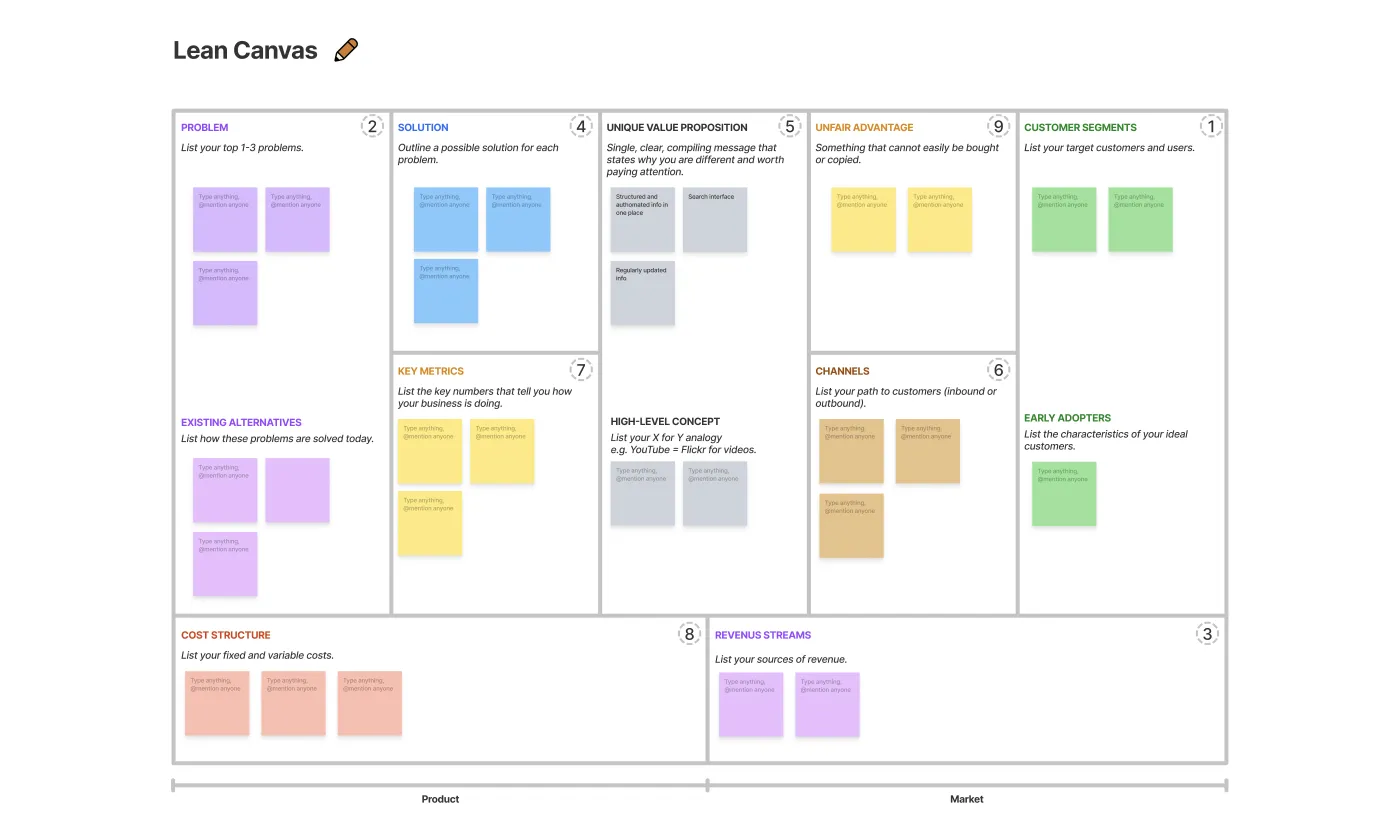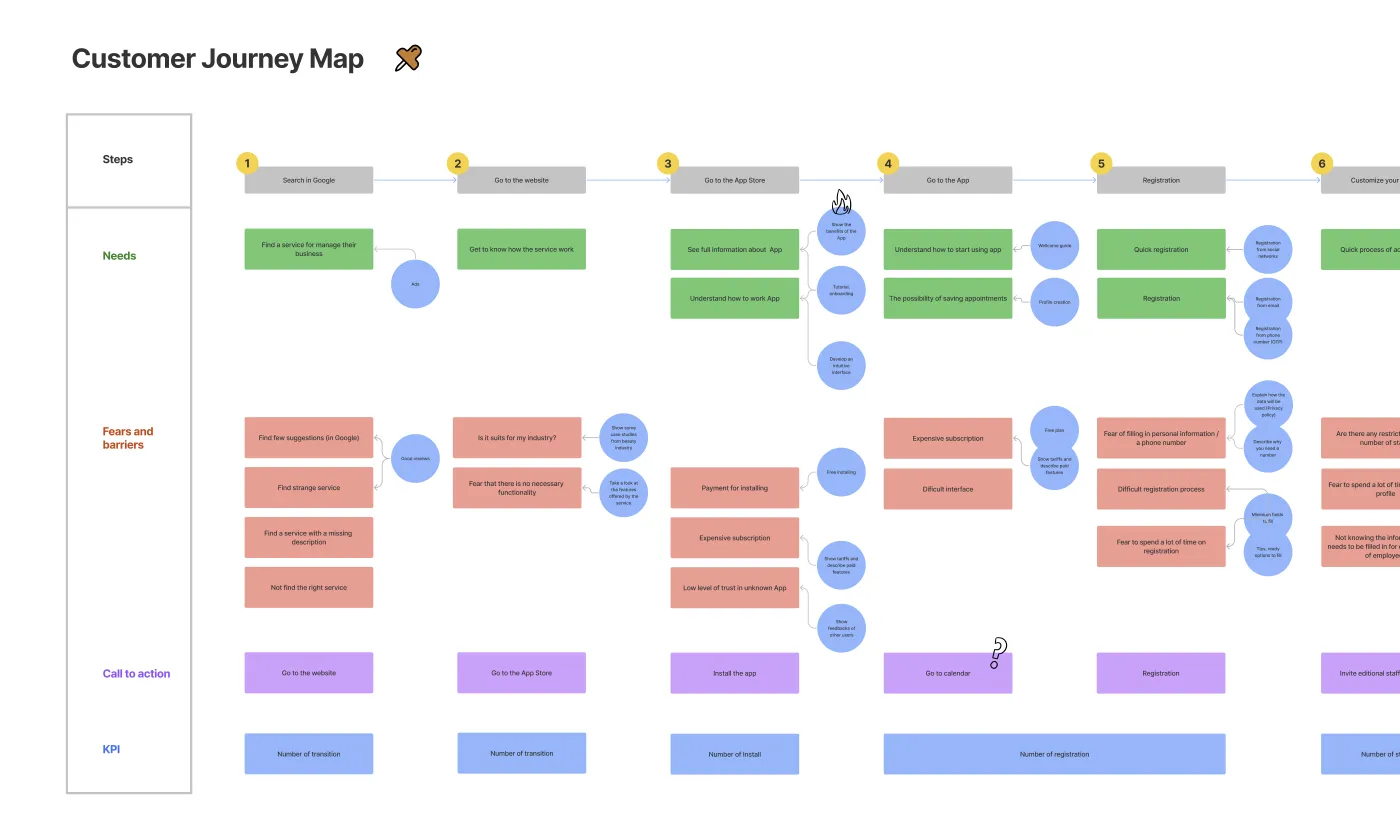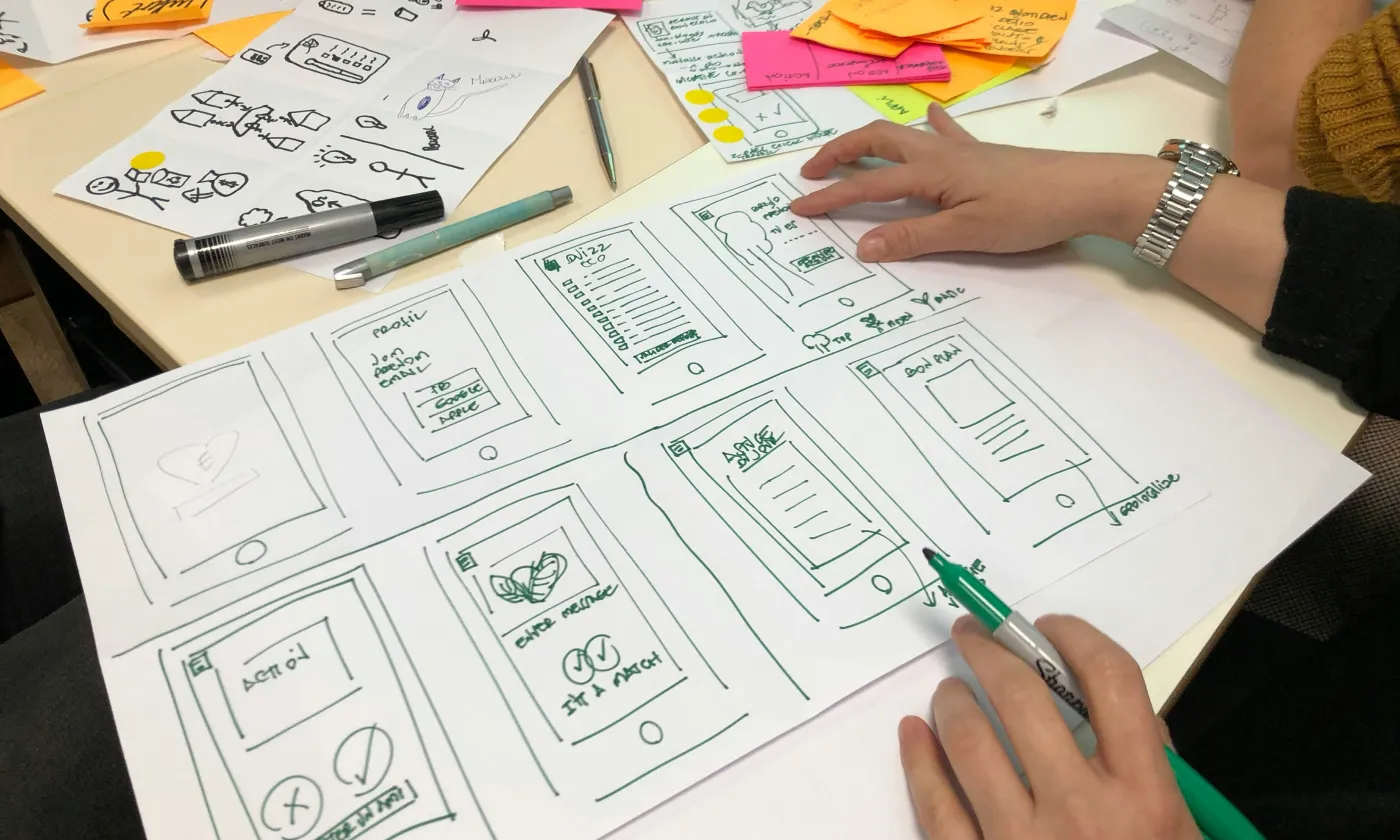
Too often, teams delay or deprioritize design research because they think they don’t have time or they already “know the user.” Still, many product teams spend months developing their ideas, only to find out they don’t understand what users really need.
Design research isn’t just about “knowing your users.” It’s about uncovering what your team didn’t think to ask, at the exact moment it matters. Yet too often, it's treated as optional or delayed until after launch.
In this article, we walk through how our app design company approaches design research across client projects — where it fits, what it reveals, and how it helps businesses make smarter decisions before a single line of code is written.
When (and Why) We Recommend Design Research in Software Projects
Even with a foundational understanding of design research, knowing when and why to deploy it is crucial. It’s not a one-size-fits-all solution, nor is it a luxury. This is a planned effort to lower risks, make better investments, and ensure that each line of code adds real value to the product.
Here are the moments when, in our experience, design research delivers the most impact:
Before Product Concept Validation
We often help founders and product teams with a promising idea, some funding, and a vision. However, they usually lack proof that users really need what they plan to build.
This is the best time to use lightweight design research tools: user interviews, field research, or simple prototypes tested with real users. At this stage, you’re not validating screens — you’re validating assumptions. We’ve helped clients pivot or narrow down their MVP scope based on insights from just a handful of conversations.
Why it matters: You need to confirm that a real user problem exists, that your solution is wanted, and that there is a true market opportunity. Skipping this step often means building features that people don't need or creating products that don't succeed. This can waste resources and time.
When Usage Data Shows Unexpected Behavior
Analytics can tell you what users are doing — but not why. We typically get product teams trying to decipher the numbers without ever talking to the folks behind them. If your metrics are showing problems, like a high bounce rate on a key page, low adoption of a key feature, or off-target user flows, design research will inform you what is going wrong.
Why it matters: If you don't understand why users act in a certain way, you'll be reduced to making best guesses at the solution. Blindly iterating on data alone can lead to even more lost development cycles and more user frustration. Design research enables us to crack the code behind the numbers. Empowered with that knowledge, we can take data and turn it into meaningful insights.
During Redesigns or Feature Pivots
UI/UX redesign is not just about surface sheen — it's often a chance to consider how the product supports user objectives in a new way. But when groups redesign without research, they often end up basically repeating the same issues with a fresh layer of paint.
We usually recommend researching first prior to massive redesigns or shifts, especially when:
- There’s legacy UX debt
- The business model is shifting
- You’re expanding to new user segments
Why it matters: Bringing design research in early helps you avoid wasting time on features that need major changes. It also ensures that the redesign matches how people actually use — or want to use — your product.
Want a web app that does more?
Let's build a solution that's smart, sleek, and powerful.
Alina
Client Manager

How Research Reduces Risk and Guides Smart Investment Decisions
In essence, design research isn't an expenditure; it's an insurance policy against building the wrong thing.
- Minimizing Rework. By identifying usability issues or misaligned features early, research dramatically reduces the need for costly post-launch fixes and iterative development cycles.
- Optimizing Resource Allocation. It helps your development and design teams focus on features that meet user needs and support business goals.
- Enhancing Product-Market Fit. Research helps you shape your product so it truly connects with your target audience. This leads to more people using it, staying with it, and ultimately achieving more success in the market.
- Informing Strategic Roadmaps. Research insights provide solid data that guide product roadmap decisions. This helps stakeholders make informed choices based on user evidence rather than guesses or internal discussions.
At Stfalcon, we specialize in using design research methods to help your products succeed. We turn potential problems into opportunities, ensuring that your software investment provides the best possible returns.

How to Conduct Design Research in Practice
To understand how to conduct design research effectively, teams typically combine exploratory and evaluative methods depending on product stage and goals.
At Stfalcon, design research is not just a theory. It is an active process that closely connects with software development. We customize our approach for each project, using specific methods that fit your unique challenges and goals. Here’s a look at design research types that help us put concepts into action:
Exploratory Research: Understanding the Problem Space
Before we even think about solutions, we focus on truly understanding the problem. This is the essence of our product discovery services: uncovering hidden needs, and challenging assumptions. Tools like the Lean Canvas are very useful because they help you quickly outline your business idea. They make you clearly describe your main problems, target customers, unique value, and key assumptions all on one page.
User Interviews (Deep Dive)
We don’t just ask users what they want — we dig into what they struggle with. To succeed, use active listening and ask questions to uncover deeper needs, not just surface opinions. These insights help shape product direction long before design begins. This helps us understand why people behave and feel the way they do. It often informs or challenges the "Problem" and "Customer Segments" in a Lean Canvas.

Competitive Analysis & Landscape Mapping
We do more than compare features; we also look at how users interact with the app, how it makes money, common design problems, and even app store reviews. This helps us find market gaps and opportunities that others miss. This is especially useful when we enter crowded or saturated markets. We identify gaps in the market, common mistakes, and chances to make your product stand out. This process often sharpens your "Unique Value Proposition" and "Unfair Advantage."
Evaluative Research: Testing & Validating Solutions
Once we have potential solutions, we put them to the test. This is likely to be one of the most significant stages of design research, if not the most significant. It involves validating ideas, identifying pain points, and verifying whether our designs actually address user needs.
- Usability Testing (Real-World Application). This stage consists of usability testing on target users. These can be moderated or unmoderated tests. We observe how the users interact directly with prototypes or live products. We are looking to establish why users are hanging, not just that they are, so we can spot specific points of inefficiency or confusion.
- A/B Testing (Data-Driven Optimization). While typically an activity performed by the development teams, design research underpins powerful A/B testing strategies. We ensure hypotheses for such experiments are based on rich user understanding rather than speculation, which culminates in more effective and decisive outcomes.
Advanced Design Research Techniques: Going Beyond the Interface
Beyond the core design research methodology, you can employ sophisticated techniques so that solutions remain complete and insightful.
Persona Development (Beyond Demographics)
Personas need to be founded on real research and evolve with the product. You need to develop profiles that indicate motivation, frustration, and behavior — not titles or ages — so that you can make design decisions based on real empathy.
User Journey Mapping
We map entire user lifecycles, highlighting emotional highs/lows, pain points, and moments of truth. These journey maps help product teams align on what really matters to users — and where the biggest design opportunities lie.

Service Design Blueprinting
For platforms with complex workflows or offline components, we create blueprints that illustrate the entire service ecosystem — including interfaces, backend systems, and human interactions — to ensure a seamless experience across every touchpoint.
Rapid Prototyping & Iterative Testing
We pair research with quick-turn prototypes to validate ideas fast. This tight loop of “build, test, learn” helps clients avoid overinvesting in unproven ideas and accelerates the delivery of features users actually want.
The design research process is a constant flow of validating assumptions, reducing uncertainty, and refining direction. By integrating it tightly into our design and development workflow, we help our clients move faster and smarter.
What Makes Research Actionable (and What Doesn’t)
Not all research leads to clarity. One of the most common reasons research gets ignored is that it’s too vague to be useful. You get interview notes, quotes, maybe even charts, but no clear next steps.
Here’s what we’ve seen go wrong (and how we avoid it):
Common Traps That Derail Actionable Research
Besides the best examples of design research, it is also worth paying attention to common mistakes that can decrease value of the whole process.
- Vague Insights: Research that ends with broad statements like "users want a better experience" or "the interface is confusing" provides little guidance. Without specific examples or root causes, teams are left guessing at what to fix.
- Unclear Hypotheses: Starting research without a clear question or testable hypothesis is like setting sail without a destination. The resulting data, no matter how plentiful, won't point to a clear direction for design.
- Asking the Wrong Users (or no users at all): Conducting interviews or tests with internal stakeholders who aren't representative of the actual user base, or, worse, relying solely on intuition, guarantees insights that miss the mark. Understanding who your actual users are and their specific contexts is paramount.
These issues often result in reports that feel interesting, but can’t drive design or product decisions.

Best Design Research Practices We Follow for Actionable Insights
Our approach is meticulously designed to bypass these traps, ensuring our research directly fuels your product's success.
1. Align Design Research and Strategy
Before any research begins, we work closely with your team to clearly define the overarching business objectives. Whether it's increasing conversion rates, improving user retention, or validating a new market opportunity, every research question and method is designed to provide answers that directly contribute to these goals. This ensures insights are always relevant and impactful to your bottom line.
2. Run Stakeholder Workshops to Refine the Right Questions
Before we talk to users, we talk to you. We run short, focused workshops with product owners, marketers, or sales teams to align on hypotheses, assumptions, and priorities. This helps us ask better questions — and avoid chasing irrelevant answers.
3. Synthesize Findings into Clear UX Recommendations
We don't just present data; we synthesize complex findings into precise, prioritized UX recommendations. This means translating observations like "users struggled with navigation" into concrete suggestions such as "Reorder the main navigation menu to prioritize X and Y based on observed user task flows," or "Implement a guided onboarding tour for feature Z to reduce initial confusion." We deliver actionable insights that your design and development teams can immediately implement, ensuring research directly informs iterations and enhancements.
When research is done well, it doesn’t just tell you what users said — it tells you what to do next. That’s the standard we hold ourselves to in every project.
DIY vs Partner-Led Design Research: When to Involve Experts
Some teams handle research internally — and that can work, especially if you have experienced UX staff and plenty of time. But in practice, internal research often runs into a few common issues:
- Bias (teams unintentionally steer findings to confirm their assumptions)
- Time constraints (research gets rushed or skipped entirely)
- Lack of follow-through (findings don’t translate into actionable design decisions)
That’s where an external team can add real value.
It's not outsourcing a task when you invite an experienced design research companion, like Stfalcon. It's a strategic investment in efficiency, objectivity, and actionable results. We become your team members, particularly when:
- You Need Quick Turnaround. Outside experts, with limited resources and established techniques, are generally able to conduct extensive research much faster than an internal team already overwhelmed with everyday tasks. Such speed can be critical to the exploitation of market openings or the addressing of urgent product issues.
- You Need Unbiased Validation. An external team has a fresh, objective perspective, free from internal assumptions or past biases. This objective thought is vital for verifying new concepts, uncovering uncomfortable truths, and affirming that findings truly are user-driven.
- You Need Help Turning Research into Design and System Decisions. This is where our integrated model truly shines. As a software development company that also provides design services, we ensure a seamless handoff—or, even better, a seamless continuation. When the team conducting the research is also deeply involved in the subsequent design and development phases, the insights gained are all the richer and more effectively used in making actionable product improvements.
If you’re wondering whether it’s the right time to bring in external help, we’re always open to a conversation — even if it’s just to define what your research approach could look like.
Conclusion: Why Design Research Matters for Product Success
Now you already know what design research is: not a luxury or a nice-to-have. It's what keeps your teams from doing something wrong, wasting their time, or misreading their users. Whatever you're shipping, whatever you're iterating on a feature, or redoing a redesign, research is what gives sense to your decisions.
So here’s the real question: what are those big assumptions that you haven't checked with users yet?
If you’re unsure, that’s precisely where we can help. Whether you need to validate a product idea, uncover usability issues, or design something from scratch, our specialists are here to provide clarity through research and turn it into actionable results. Contact us, and we'll help you uncover the insights that transform uncertainty into strategic muscle.
FAQ: Design Research Process, Methods, Tools, and Best Practices
How is design research different from market research?
Design research focuses on understanding user behavior, needs, and interactions with products or services. Market research, on the other hand, looks at broader trends, target demographics, and market demand. Both are valuable, but design research is what informs UX decisions.
How long does a typical design research project take?
It depends on the project, but even a lean research sprint can be completed in 1–2 weeks. For more complex products or multi-phase engagements, research might take 3–4 weeks. The key is to scope it based on what decisions need to be made, not just the available time.
Is it possible to do design research on a tight budget?
Yes. Even with limited resources, you can run lean research using methods like quick user interviews, guerrilla testing, or internal stakeholder mapping. The key is prioritizing the right questions and using focused, efficient techniques, which is something we often help our clients do.



